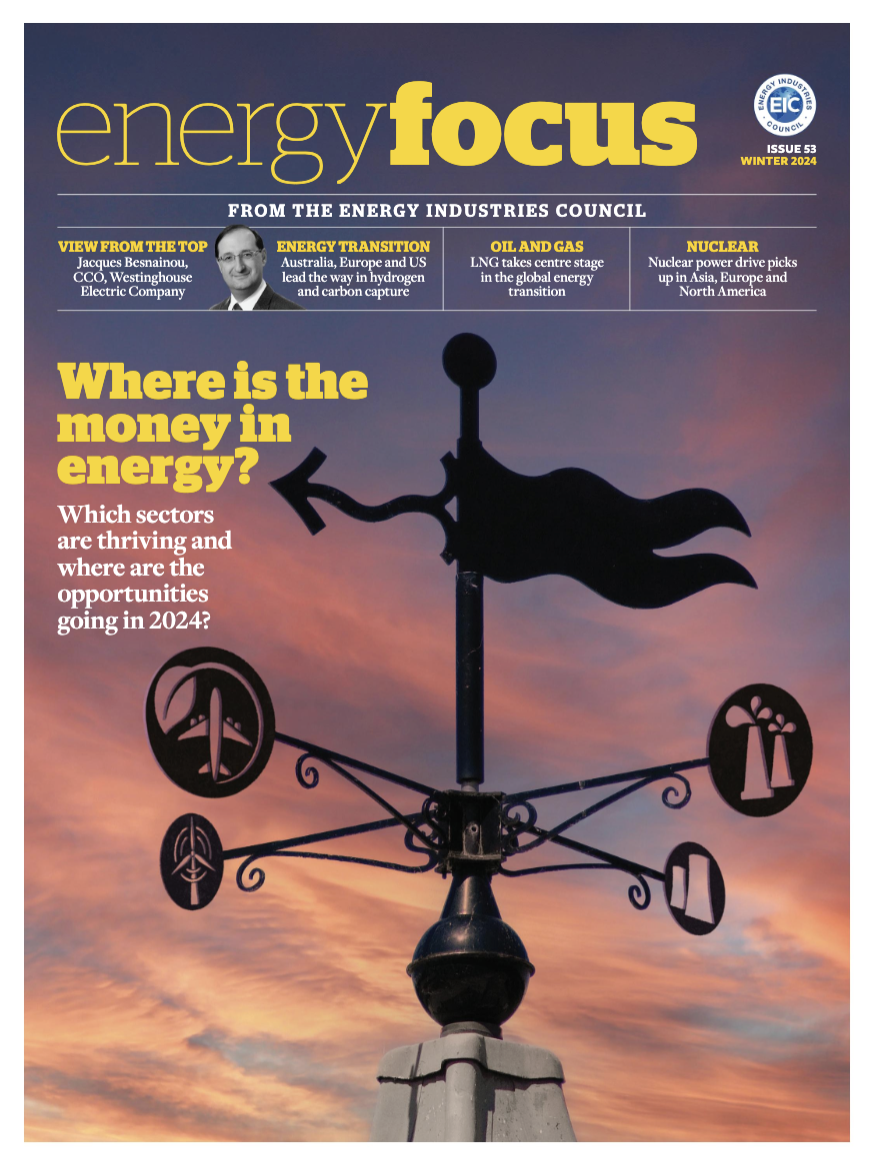US offshore wind spins into life
Still in its infancy US offshore wind offers huge opportunities, as the country looks to draw on UK and European expertise to advance development, writes the EIC’s Amisha Patel.

Back in 2001 when Cape Wind was proposed as America's first offshore wind project, the US offshore wind market barely existed. Today, the UK and Europe is leading deployment of offshore wind on a massive scale with over 12GW in operation, and the US has commissioned its first ever project – the Block Island Wind Farm – even though Cape Wind fell through. The Block Island project saw five commercial turbines connected to the grid last summer, most of which were manufactured in mainland Europe, and drew on European installation experience.
The industry learnt crucial lessons from the Cape Wind project about the importance of community engagement and planning processes. This, coupled with the experience of building Block Island, has given the US offshore wind sector real momentum. With many states putting plans in places for projects, this market is set to take off.
The prospect of promising developments in the US is catching the attention of European companies that can export their years of experience in the field. These include some of the largest companies in the world namely, DONG Energy, Siemens and Statoil – who, along with construction and engineering capabilities, bring a lower cost of capital which has been a key focus in Europe.
Several projects in the US are now in the advanced stages of development and are scheduled to begin operation post 2020. Notably, the announcements of unprecedented commitment to deployment offshore Massachusetts and New York.
Massachusetts
In Massachusetts, there are a total of five wind energy areas designated by the government for offshore wind development. The Energy Bill passed in August 2016 included a requirement for utilities to contract 1.6GW of offshore wind power by 2027. Massachusetts has invested in infrastructure to encourage deployment with a marine terminal to support offshore wind projects and a blade testing centre to attract more technology companies.
With Deepwater Wind, DONG Energy and Vineyard Wind all announcing their intent to use the New Bedford Marine Commerce Terminal when construction activity commences in their respective lease areas, activity is really ramping up in this area. The remaining two areas are expected to be leased in 2018.
Most recently DONG Energy has secured the lease for the Bay State Wind project. Global provider of engineering and technology-centric professional services Lloyd’s Register has used the expertise of its subsidiary SGC Engineering to support DONG Energy in the evaluation of the Bay State Wind project, with its offshore site and export cable route geophysical and hydrographic surveys.
The first tender round to obtain a power purchase agreement (PPA) is anticipated to take place in June 2017, which will commit the winning project to deliver power four years later. The remainder of 2017 will see the area focus on the implementation of the legislation and the procurement process. The Massachusetts Clean Energy Center (MassCEC) has issued a request for proposal for engineers to analyse other sites in the state where the industry could establish a base for ancillary work, operations and maintenance, and future manufacturing.
New York
Meanwhile, New York has committed to build 2.4GW of offshore wind by 2030 starting with the Deepwater One – South Fork 90MW project in the Rhode Island-Massachusetts lease area. Earlier this year a PPA was signed between the developer Deepwater Wind and Long Island Authority. Construction is set to start as early as 2019 with a target commercial operation date of 2022.
The developer is also trying to secure a PPA for the 201MW East End Wind project to be developed alongside the South Fork project in the same lease area. All the projects will be built over one construction campaign if the latter projects obtain approval.
Statoil Wind is also looking to develop a project in New York, winning a lease at the end of last year. The New York State Energy Research and Development Authority is currently putting together a strategy to develop the state’s offshore wind resources. The Offshore Wind Master Plan is expected this year and will further identify sites and set targets for capacity and detail target commercial operation dates.
New Jersey
In neighbouring New Jersey, DONG Energy has secured rights to explore the potential development of 1GW of offshore wind with its Ocean Wind project. US Wind Inc also has plans to develop at least 600MW in its lease area.
Maryland
Elsewhere, Maryland aims to bring 5GW of capacity online within the next 10 years or so. Maryland’s Public Service Commission (PSC) has approved applications that were submitted by US Wind Inc and Skipjack Offshore Energy LLC for up to US$1.9bn of developments. The state has now become the first to back commercial scale construction. The PSC's decision is contingent on approval by the federal government of the developers' site assessment plans, as well as construction and operations plans.
North Carolina
In North Carolina, Avangrid fought off competition from Alpha wind and Statoil to win a bid to develop the Kitty Hawk zone. Regulators expect to execute the lease by the summer once the review is completed. However, with the state being less progressive in terms of policy to support development of the project, construction is likely several years away.
California
Moving across to the West Coast, the debut auction for the Californian lease is anticipated to take place by the end of 2018. State officials are working with the federal agency to gather data for the entire West Coast with the first sale set to focus on the central region where developers Trident Winds and Statoil have already staked claims. The Bureau of Ocean Energy Management (BOEM) and the California Energy Commission will present initial findings and outline a proposed call area at an Intergovernmental Renewable Energy Task Force meeting on 13 July.
The federal agency plans to issue a call for information and nominations by the end of the summer, which will include a 45-day comment period. Identification of the area is expected by the year-end or in early 2018. At the same time, BOEM will begin an environmental assessment and an auction could follow late in 2018 at the earliest. US developer Trident is proposing to build a 765MW floating wind farm off Morro Bay and is targeting a 2025 commercial operation date. Statoil is also interested in the 68,000-acre site 33 miles off the coast but is yet to outline any firm development plans.

Lessons from Europe
As it stands, developers have collectively paid an estimated US$60m to secure leases, as described, for a combined 18GW of offshore wind potential, which underscores the private sector’s strong confidence in the US market. However, for the industry to progress it needs to have policies in place to support the ambitious deployment targets.
While opportunities are abundant, European developers must still grapple with plenty of risks in the US market. Local opposition, limited supporting infrastructure and no requirements for offtake agreements to name a few. In Denmark, for example, the government appoints sites, performs all the permitting and grid connection work and then holds auctions.
As a result, project prices in Europe are at record low prices. At the end of 2016, Vattenfall submitted a winning bid of US$53/MW per hour (MWh) for the 600MW Kriegers Flak, 58% lower than the cap price for the Danish offshore wind tender.
This record-low bid proves that the European Union’s goal for an offshore wind levelised cost of energy of US$112/MWh by 2020 is possible. In the UK, costs have lowered by almost a third since 2012 to the targeted £100/MWh, well ahead of the 2020 target date.
But it is DONG Energy’s zero subsidy bid to build two projects in the German North Sea – relying on wholesale market prices instead of support from the government – that is a major breakthrough for the cost competitiveness of offshore wind and demonstrates the technology’s massive global growth potential.
Low costs will pave the way
Cost reductions will be crucial for the growth of America’s offshore wind market, and it is widely believed across the industry that the US can benefit from European experience. In the US, cost reductions will depend on near-term deployment as well as sustained investment in offshore wind technology and the supply chain. Future cost reductions will come through technology advancements, as well as streamlining the construction and installation process. The industry certainly has the potential to benefit from 25 years of European experience making the US offshore market one to watch.
By Amisha Patel, Head of Power, Nuclear and Renewables, and Public Affairs, EIC






Follow us
Advertise
Free e-Newsletter